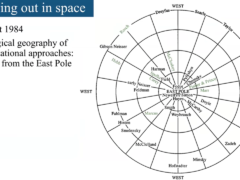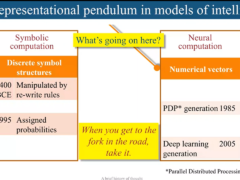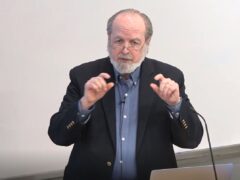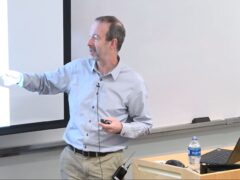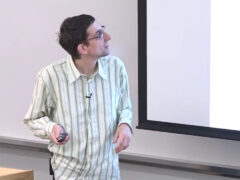A Brief Exposition Of Quadratic Forms In Two Variables Over The Integers And A Theorem Of Manjul Bhargava
Let p be a prime. Then, p leaves a remainder 1 when divided by 4 if and only if p is a sum of squares of two integers. This is a well-known result of Fermat. We will leave this thread here; if followed it would lead us into Reciprocity Laws – a theme that is at the heart of modern number theory.
More generally, given a Binary quadratic form, say Q(x, y) := ax2 +bxy +cy2, one may ask if one can “succinctly” describe the integers n that can be represented by Q, i.e. there exists integers x0 and y0 such that Q(x0, y0) = n. This naturally leads us to the notion of composition of two binary quadratic forms to give us a third binary quadratic form. Possibility of such composition laws was first studied by Lagrange and then made more precise by Legendre. The job was completed by Gauss. We will briefly describe this work of Gauss on the Composition of Binary Quadratic Forms, as simplified by Dirichlet (This is 1850s) – which turns the set of Binary Quadratic Forms of a given Discriminant (up to proper equivalence) into a finite Abelian group. In his Princeton thesis (2004), Manjul Bhargava provided another very natural definition of this composition law of Gauss. We will end by stating this beautiful theorem of Bhargava.
- Séries:
- Microsoft Research Talks
- Date:
- Haut-parleurs:
- Vijay M. Patankar
- Affiliation:
- Indian Statistical Institute
-
-

Vijay Patankar
-
-
Taille: Microsoft Research Talks
-
Decoding the Human Brain – A Neurosurgeon’s Experience
Speakers:- Pascal Zinn,
- Ivan Tashev
-
-
-
-
Galea: The Bridge Between Mixed Reality and Neurotechnology
Speakers:- Eva Esteban,
- Conor Russomanno
-
Current and Future Application of BCIs
Speakers:- Christoph Guger
-
Challenges in Evolving a Successful Database Product (SQL Server) to a Cloud Service (SQL Azure)
Speakers:- Hanuma Kodavalla,
- Phil Bernstein
-
Improving text prediction accuracy using neurophysiology
Speakers:- Sophia Mehdizadeh
-
-
DIABLo: a Deep Individual-Agnostic Binaural Localizer
Speakers:- Shoken Kaneko
-
-
Recent Efforts Towards Efficient And Scalable Neural Waveform Coding
Speakers:- Kai Zhen
-
-
Audio-based Toxic Language Detection
Speakers:- Midia Yousefi
-
-
From SqueezeNet to SqueezeBERT: Developing Efficient Deep Neural Networks
Speakers:- Sujeeth Bharadwaj
-
Hope Speech and Help Speech: Surfacing Positivity Amidst Hate
Speakers:- Monojit Choudhury
-
-
-
-
-
'F' to 'A' on the N.Y. Regents Science Exams: An Overview of the Aristo Project
Speakers:- Peter Clark
-
Checkpointing the Un-checkpointable: the Split-Process Approach for MPI and Formal Verification
Speakers:- Gene Cooperman
-
Learning Structured Models for Safe Robot Control
Speakers:- Ashish Kapoor
-















